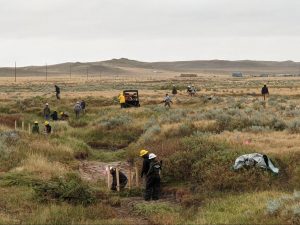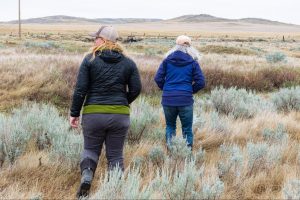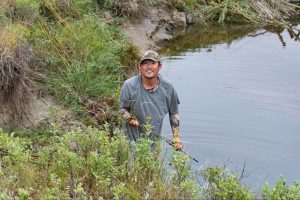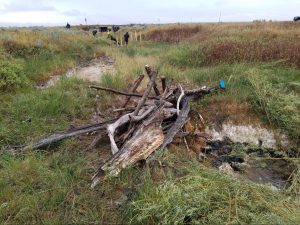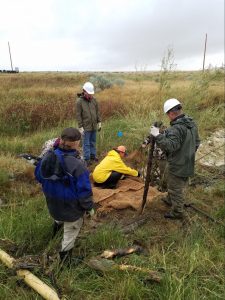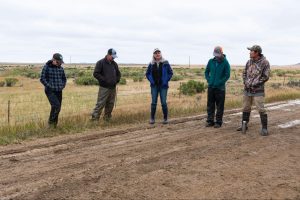August and September were whirlwind months of visiting new people and getting outside. MWF has been intentionally busy finding spaces that yield connections and working to build relationships. MWF’s goal has been, and will continue to be, to show up and to serve as a bridge to connect people with issues around conservation to promote advocacy for wildlife, habitat and public access, and we’ve been doing just that!
It’s one thing to talk about it, and it’s quite another thing to take action. This is the first installment of a monthly update from the field where you’ll be able to celebrate with MWF and track all the places we’ve visited, folks we’ve supported, and our work in the field. For this initial update, we’ve included updates from the field for both August and September. For future field work, we’ll share updates every month, so stay tuned! In months where the fieldwork is slower, we’re going to work to keep you updated on ongoing work and campaigns.
Habitat Restoration for the Greater Sage Grouse outside Winifred
Morgan wrote a blog outlining the work and partners involved, so please give it a read and share it far and wide!

Women in Ranching Circle in Lima
Morgan attended the all-women circle at J Bar L Ranch in Lima where Amber Smith, a rancher in Cohagen and Women in Ranching Program Director with Western Landowners Alliance, facilitated the event. Focused on land stewardship and conservation, wildlife tracking, and working with equines, the circle brought together women from many walks, all wanting to connect, support, learn from, and grow with each other. It was a wonderful way to meet new people, experience the Centennial Valley, and learn more about working lands and ranching.
FWP Open Houses across the state: Glasgow, Helena, Great Falls, Billings, Miles City
MWF Staff showed up at each Open House held by FWP, listened to the public, and took notes so that we can work towards greater advocacy and accountability. Frank Szollosi, MWF’s Executive Director, attended each Open House and took notes of topics shared at each meeting. In Glasgow, Hank Worsech, the Director of FWP, joked about how Frank will remind him to share anything he missed. A gathering was held at Mighty Mo Brew Co. in Great Falls where MWF supporters turned out to visit with each other before the Open House and discuss talking points. MWF staff took the opportunity to visit with FWP staff in many of the locations where Open Houses were held and also showed up at multiple meetings held by FWP, such as the Missouri Breaks Elk Working Group meeting in Glasgow, and the Devil’s Kitchen Working Group meeting in Cascade. Thanks to those who came out to the Open House events, raised their voices, and stood up for wildlife, habitat and public access.
Watering Cottonwoods along the Missouri River and Talking Hunting with the Friends of the Missouri Breaks Monument
The BLM, Northwestern Energy and MWF all supported the Friends to plant cottonwood and willow cuttings on both private and public land along the Missouri River outside Loma, within the Missouri Breaks Monument. The Friends are in their 8th year of planting and have planted over 800 cuttings, with the site that Morgan helped water 118 trees, most of which are actively growing roots. Cottonwoods in the upper section of the Missouri River are aging out and new growth is needed, so the Friends are working to support the growth of new trees. Trees are planted up and away from the river so that ice jams don’t remove them. Marcus spent the evening of September 28th chatting with the Friends virtually about all things “Hunting in the Breaks,” which welcomed non-hunters and hunters to come together to talk as hunting season gets underway.
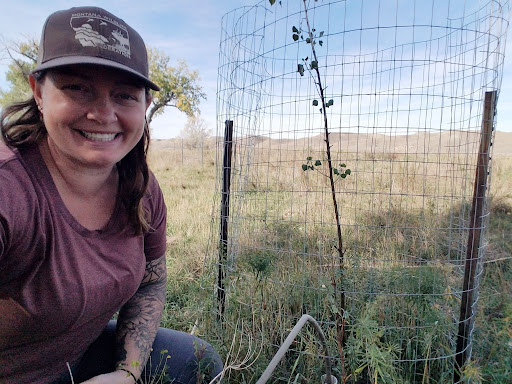
Pictured is MWF staff, Morgan Marks watering a Cottonwood cutting; Photo taken by MWF staff, Morgan Marks.


Pictured is Mikayla Moss, the Executive Director of Friends of the Missouri Breaks Monument, wrapping up the hose for watering and working to water trees; Photo taken by MWF staff, Morgan Mark
Chokecherry Festival in Lewistown
Under big blue skies, MWF had a booth at the annual Chokecherry Festival. It was a beautiful day and a large-scale event, spanning the entire main drag in downtown Lewistown, that allowed for great exposure for the organization. A total of 34 new folks shared their contact information during the event and 3 new members joined the MWF to support and advocate for wildlife, habitat and public access.
Grayling Rescue with Region 4 FWP Fisheries Staff outside Fairfield
Morgan fulfilled some of her childhood dreams of playing in streams and catching fish with her bare hands when she worked alongside FWP Fisheries staff to rescue Grayling from a canal outside Fairfield. If left in the canal, the fish wouldn’t make it through the winter. A total of 220 juvenile fish and 131 adult fish were rescued and moved to Pishkun Reservoir.
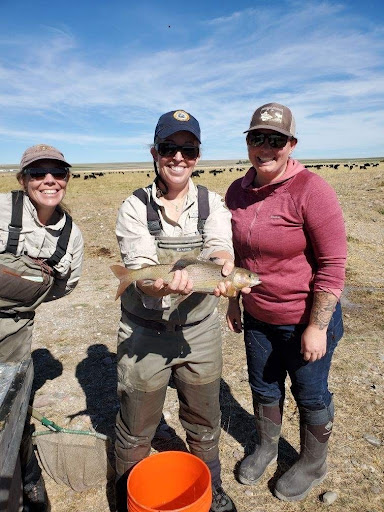
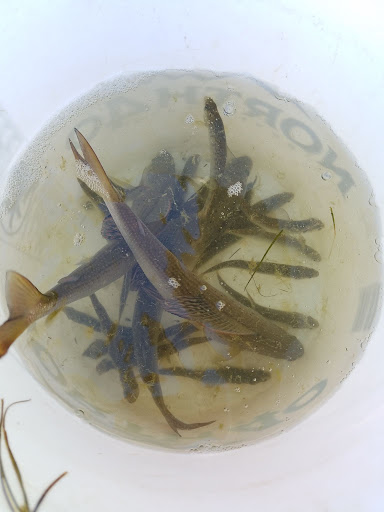
Pictured on the left are, from left to right, FWP Fisheries staff Katie Webster, Katie Vivian and MWF Staff, Morgan Marks; Photo taken by FWP staff person, Dan Frazer.
Pictured on the right are juvenile and adult Grayling fish that were rescued; Photo taken by MWF staff, Morgan Marks.
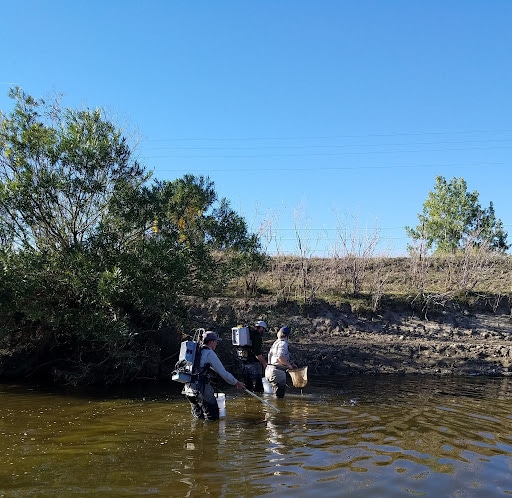

Pictured on the left are FWP Fisheries staff; Photo taken by MWF staff, Morgan Marks.
Pictured on the right are FWP Fisheries staff, Dan Frazer and Katie Vivian, counting Grayling fish and tracking the numbers of juveniles versus adults; Photo taken by MWF staff, Morgan Marks.
Mannix Ranch Field Day in Helmville
Morgan Marks, MWF’s North-Central and Eastern Montana Field Representative showed up at Mannix Ranch in Helmville to visit with multiple members of the Mannix family, staff from Blackfoot Challenge, other ranchers, such as Caroline Nelson from Little Creek Lamb and Beef in Townsend and Sarah and Josh Christensen from Pintler Mountain Beef and Christensen Brothers Ranch, and a staff person from One Montana, Kelly Beevers, based out of Winnet (soon!) who also started and founded Topos and Anthros, a consulting firm working to strategically build strong communities and connect working lands, landowners, producers, private businesses and nonprofits. Presenters from the Mannix Ranch and Blackfoot Challenge discussed watershed health, land stewardship, regenerative ranching practices, rangeland practices, conservation activities on the ranch, collaboration within the community towards conservation, and how the future looks bright with new ventures coming down the line, such as a farm to table restaurant named Old Salt Co Op in Helena. The event was held and promoted by the Quivira Coalition who are hosting the virtual Regenerate Conference in late October. Don’t worry, MWF will be tuning in for that too!
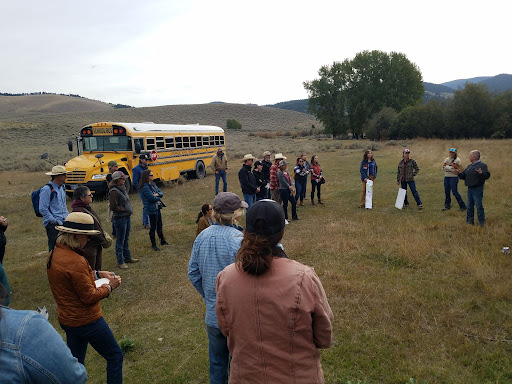
Pictured are participants for the field day at Mannix Ranch; Photo taken by MWF staff, Morgan Marks.
Thanks for reading! For questions, suggestions, to get involved as a volunteer, and to share upcoming events you think would be great for MWF to show up at, please email or call Morgan at 406-403-4464 morgan@mtwf.org
See you in the field,
MWF Field Team

